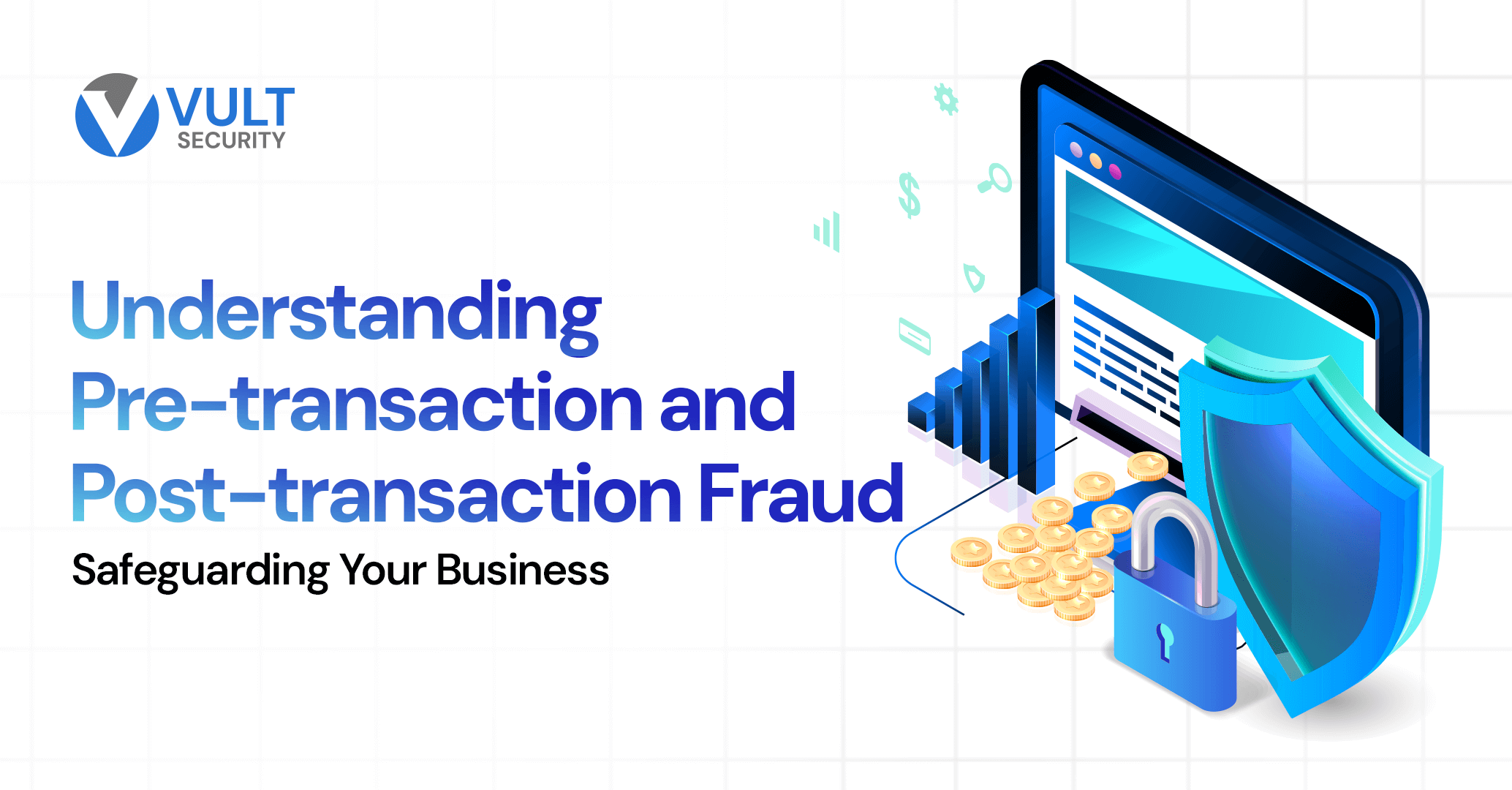
In the ever-evolving world of digital transactions, the threat of fraud looms over the prospects of those involved in conducting business, regardless of the scope of their business. Companies strive to obtain the latest solutions to outmaneuver dishonest attempts to defraud the business or the customer.
Understanding the distinct dynamics of pre-transaction and post-transaction fraud is crucial to staying ahead of the curve. These two fraud types can have vastly different origins, impacts, and mitigation strategies, and failing to grasp the nuances can leave your business vulnerable.
This blog post will explore the complex world of pre-transaction and post-transaction fraud. We’ll define the key differences, explore the driving forces behind each type, and examine the toll they can take on businesses. Most importantly, we’ll equip you with the strategies and best practices to build a comprehensive fraud management framework and keep your organization safe.
Fraudsters are always one step ahead, but with the proper defenses, your business can triumph over the ever-changing fraud landscape.
Distinguishing Pre-Transaction and Post-Transaction Fraud
At the heart of this problem is distinguishing between pre-transaction and post-transaction fraud. Pre-transaction fraud refers to criminal acts that occur before a legitimate purchase or payment is made. This includes identity theft, account takeovers, and using stolen payment information to make unauthorized transactions. On the other hand, post-transaction fraud involves fraudulent activities that happen after a valid transaction has been completed, including chargebacks, refund fraud, or friendly fraud.
The Driving Forces Behind Different Fraud Types
The causes and dynamics of these two types of fraud can be quite different. Cybercriminals continuously try to exploit weaknesses in authentication systems for pre-transactions while also taking advantage of data breaches and increasingly sophisticated social engineering techniques. Fraudsters find the dark web an easy place to quickly turn their ill-gotten gains into cash due to the availability of stolen personal and financial information.
Several drivers behind post-transactional fraud exist. Customer dissatisfaction with a product or service can lead to buyer’s remorse. False claims being filed against businesses can be deliberately organized with chargeback requests as part of larger scams set up by individuals or groups; their entire goal is to take money from the company.
The Devastating Impact of Fraud on Businesses
Both pre-and post-transactions have severe implications for commercial enterprises. Immediate financial losses may result from fraudulent activity, thus tarnishing the brand name while shaking customer confidence due to delayed detection. Therefore, businesses end up eating costs associated with reversing charges caused by unauthorized transactions executed successfully by criminals who take advantage during the dispute management process when tighter security controls must be implemented. This drains resources meant for other core operations within an organization.
On another note, chargebacks alone can be very detrimental, especially if they are frequent. Apart from eating into profit margins, they put a lot of administrative burden on businesses, requiring thorough investigation to deny such claims. This process consumes time that could have been used for other activities necessary for the smooth management of a company. When reputational damage is done, merchants might be classified as high-risk, thus making things worse than they already are.
Combating the Fraud Threat
A multifaceted approach is the first step towards effectively dealing with pre- and post-transactional frauds. Businesses need to invest heavily in detection systems powered by data analytics, machine learning algorithms, and real-time monitoring capabilities, which can detect and prevent suspicious transactions before they happen.
Strategies for Detecting and Mitigating Pre-transaction Fraud
- Robust Identity Verification: Establish strict procedures for confirming identities by employing biometrics, behavioral analytics, and device fingerprinting during onboarding and transaction stages.
- Fraud Risk Scoring: Create more sophisticated models for scoring fraud risk that consider parameters such as geolocation data, transaction patterns, or user behavior to discover suspicious activities.
- Continuous Automated Monitoring: Continuously monitor transactions with automated systems that detect anomalies and trigger real-time alerts for quick intervention and remediation.
Strategies for Addressing Post-transaction Fraud
Effective Chargeback Management: Implement efficient chargeback processes, such as comprehensive documentation storage systems and timely dispute claims response mechanisms, to reduce the impact of fraudulent chargebacks.
Communicating Proactively with Customers: Provide clear information about transaction details, refund policies, and dispute resolution procedures. This will help engage customers better and reduce post-purchase dissatisfaction commonly associated with friendly fraud.
Cooperative Fraud Mitigation: Share intelligence among industry players, such as partners from other sectors, payment processors, regulatory institutions, etc., to develop joint strategies against post-transactional frauds.
Building a Comprehensive Fraud Management Framework
A comprehensive approach towards dealing with both pre-and post-transactional frauds should involve the adoption of a holistic business wide-ranging anti-fraud measures framework:
Fraudulent Risk Assessment: Conduct periodic assessments to identify the organization’s highest threats within this niche area, enabling the development of specific mitigation plans.
Multiple Security Layers: Employ various types of controls, including technological, operational, and organizational, to ensure adequate protection against attack. Secure payment processing gateways, user-authentication procedures, and staff training programs are stellar examples.
Continuous Awareness & Readiness Improvement: Stay vigilant about emerging trends by continuously monitoring patterns and updating prevention methods based on industry best practices.
Collaborative Approaches and Sharing of Information: Develop partnerships with other firms’ regulatory authorities and peers to share knowledge pool resources for more effective fraud-detection response mechanisms.
Organizational Alignment & Governance: Establish clear structures and strategic plans to combat attempts against a firm’s assets like money, time, or reputation to facilitate accountability decision-making.
Final Thoughts
There is an ongoing battle against pre-transaction and post-transaction fraud in digital transactions. By understanding how these crimes differ and instituting a comprehensive fraud control system, organizations can reduce risk, ensure customer trust, and shore up profits.
VULT is committed to providing companies with modern fraud prevention tools like pre-transaction fraud technology. Our skilled workforce will walk you through this landscape’s intricacies while helping develop strategies that meet your specific needs for protection against fraudulent activities. Get in touch now and discover what makes us different from other providers – let our knowledge keep us ahead of those who would defraud!